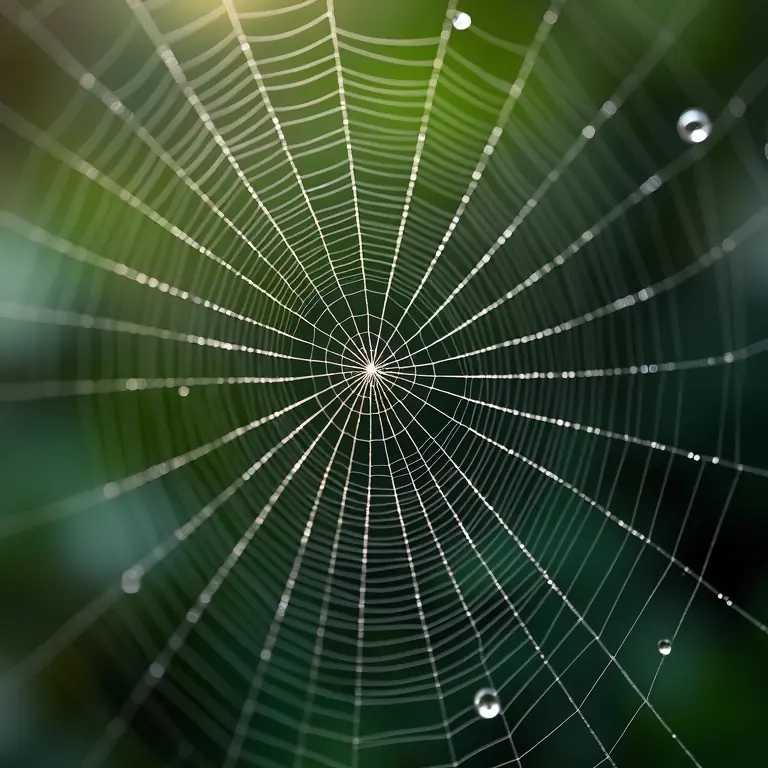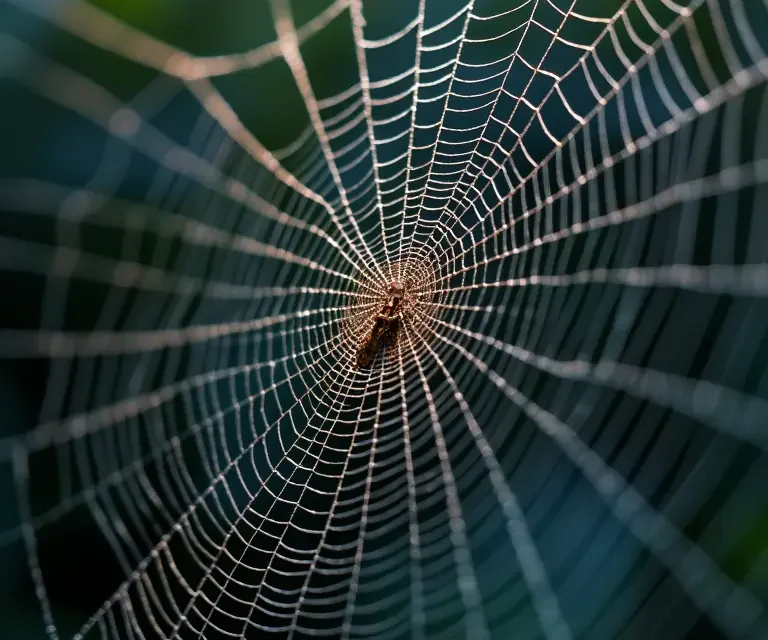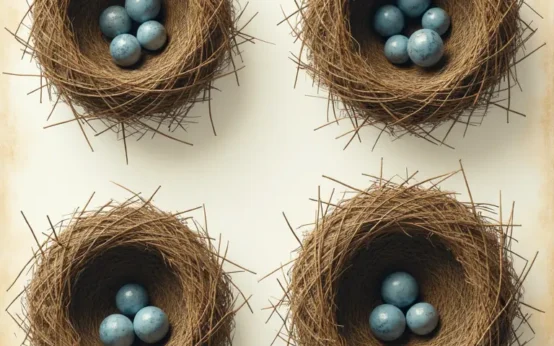Spiderwebs. They’re ubiquitous, often overlooked, and yet, profoundly fascinating. More than just sticky traps for unsuspecting insects, spiderwebs are masterful displays of natural engineering, showcasing a consistency in geometry that has captivated scientists and mathematicians for centuries. This article delves into the surprisingly complex world of spiderweb construction, exploring the mathematical principles at play, the evolutionary advantages of these designs, and the sheer artistry found in nature’s silken creations.
A Silk Road of Engineering: The Basics of Web Construction
Before we dive into the geometry, let’s briefly touch upon the materials and methods. Spider silk isn’t just one substance; it’s a family of proteins with varying properties. Different types of silk are used for different parts of the web. Dragline silk, the strongest, forms the web’s frame and spokes. Capture silk, more elastic and sticky, makes up the spiral that ensnares prey. Spiders don’t just randomly spin; they follow a remarkably consistent process. It generally begins with establishing a bridge line – often carried by the wind – followed by the construction of a frame, radial threads extending from the center, and finally, the spiral. The order and precision are key to the web’s functionality.
The Geometry of the Orb Web: A Mathematical Masterpiece
The most recognizable spiderweb, the orb web, is a prime example of geometric precision. Its architecture isn’t haphazard; it adheres to principles of geometry that maximize strength, efficiency, and prey capture.
Radial Symmetry and Angles
Orb webs exhibit radial symmetry, meaning they radiate outward from a central point. The angles between the radial threads aren’t random. They’re often close to multiples of 45 degrees. This isn’t accidental; it relates to the distribution of stress within the web. Placing spokes at these angles optimizes the web’s ability to withstand impact and prevents catastrophic failure. Imagine a wheel; the spokes distribute the load evenly. Spiderwebs operate on a similar principle.
The Spiral: Logarithmic Perfection
The spiral is arguably the most intriguing geometric element of the orb web. It’s not a simple spiral; it’s a logarithmic spiral – also known as an equiangular spiral. This type of spiral maintains a constant angle between the radius and the tangent at any point along the curve. This seemingly subtle characteristic has profound implications. A logarithmic spiral grows without changing shape, meaning the proportions remain constant as it expands. This is crucial for the web’s efficiency.
The spacing between the spiral threads isn’t uniform either. It’s typically wider at the outer edges and narrower towards the center. This gradient spacing is another key element of the web’s design. It ensures that prey becomes increasingly entangled as it struggles, maximizing the chances of capture. The closer the prey gets to the center, the tighter the spiral, and the harder it is to escape.
Golden Ratio Connections?
For years, researchers have investigated potential connections between spiderweb geometry and the Golden Ratio (approximately 1.618). While some webs *do* exhibit proportions approximating the Golden Ratio, the evidence isn’t conclusive. It’s likely that the observed similarities are coincidental, or a byproduct of the evolutionary pressures favoring efficient and stable structures rather than a deliberate attempt to incorporate a mathematical constant. The mathematical principles driving web construction are robust enough without needing to invoke the Golden Ratio.
Beyond the Orb Web: Diverse Designs and Geometries
While the orb web is the most famous, spiders have evolved a remarkable diversity of web designs, each adapted to specific environments and hunting strategies. These variations demonstrate the versatility of silk and the ingenuity of spider engineering.

Sheet Webs
Sheet webs are flat, horizontal sheets of silk, often found in dense vegetation. They lack the radial symmetry of orb webs and are designed to capture prey that lands directly on the surface. These webs are often reinforced with tangled silk threads above and below, creating a more robust barrier. The geometry is simpler, focusing on maximizing surface area for interception.
Funnel Webs
Funnel webs, common in Australia, are characterized by a funnel-shaped retreat where the spider lies in wait. The web is a sheet of silk with a sloping funnel leading to the spider’s hiding place. When prey lands on the web, the spider rushes out and ambushes it. The geometry here is focused on directing prey towards the spider’s ambush point.
Triangle Webs
Triangle webs, built by certain species of orb-weavers, have a distinctly triangular shape. They often have a sticky, irregular tangle of silk at the base of the triangle. This design is thought to be particularly effective at capturing flying insects.
Cobwebs (Tangle Webs)
The messy, irregular webs often found in corners of rooms are known as cobwebs or tangle webs. These aren’t abandoned orb webs; they’re actively maintained structures built by certain spider species. They consist of a chaotic network of silk threads, providing ample opportunities for prey to become entangled. The geometry is less defined, relying on sheer complexity to ensnare victims.
Evolutionary Advantages and the Role of Natural Selection
Why have these specific geometries evolved? The answer lies in natural selection. Spiders with webs that are more efficient at capturing prey, more resistant to damage, and require less energy to build have a higher chance of survival and reproduction. Over generations, these advantageous traits become more prevalent in the population.
Strength and Resilience
The geometric arrangement of the threads in orb webs, particularly the angles of the radial spokes, significantly contributes to the web’s strength and resilience. Distributing stress evenly minimizes the risk of tearing or collapsing, even in strong winds. The elasticity of capture silk allows the web to absorb impact energy, further reducing the likelihood of damage.
Prey Capture Efficiency
The logarithmic spiral in orb webs is a masterpiece of prey capture engineering. The narrowing spacing of the spiral threads ensures that struggling prey becomes increasingly entangled, making escape nearly impossible. The sticky nature of capture silk further enhances this effect.

Energy Conservation
Building a web requires significant energy expenditure for a spider. Efficient designs, like the orb web, minimize the amount of silk needed while maximizing structural integrity and prey capture potential. This conserves energy and allows the spider to focus on other essential activities, such as reproduction and defense.
Spiderwebs and Biomimicry: Inspiring Human Innovation
The remarkable properties of spiderwebs have long inspired scientists and engineers to explore biomimicry – the practice of learning from and emulating nature’s designs to solve human problems.
Materials Science
Spider silk is incredibly strong, lightweight, and elastic. Researchers are actively investigating ways to synthesize artificial spider silk for a wide range of applications, including bulletproof vests, surgical sutures, and lightweight construction materials. Replicating the complex molecular structure of spider silk is a significant challenge, but progress is being made.
Structural Engineering
The geometric principles underlying spiderweb construction have informed the design of bridges, buildings, and other structures. Engineers are studying how to distribute stress effectively and create lightweight, resilient structures inspired by the orb web. The use of tensegrity structures, which rely on a network of tension and compression elements, draws inspiration from spiderweb geometry.
Robotics
Researchers are developing robots that can mimic the web-spinning behavior of spiders. These robots could be used for a variety of tasks, such as constructing temporary shelters, deploying sensors, or even capturing airborne pollutants.
The Future of Spiderweb Research
Despite centuries of study, there’s still much to learn about spiderwebs. Ongoing research is focused on:
- Understanding the genetic basis of silk production: Identifying the genes responsible for producing different types of silk could pave the way for large-scale artificial silk production.
- Investigating the role of sensory feedback in web construction: Spiders aren’t simply following a pre-programmed blueprint; they’re constantly adjusting their web based on sensory information. Understanding this feedback loop could reveal new insights into their building process.
- Exploring the impact of environmental factors on web design: How do wind, humidity, and prey availability influence the geometry and structure of spiderwebs?
The world of spiderwebs is a testament to the power of evolution and the beauty of natural geometry. From the elegant spiral of the orb web to the chaotic tangle of a cobweb, each design reflects a remarkable adaptation to its environment. By continuing to study these intricate structures, we can not only deepen our understanding of the natural world but also unlock new possibilities for human innovation. Perhaps we can learn a thing or two about resilience, efficiency, and the art of building strong connections, both literally and figuratively.
Interested in other fascinating examples of natural and human-made designs? Explore the history of buttons, the political history of fonts, the strategic roots of playground games, the logical roots of coin design, or the global history of chopsticks.


 The Curious Calculus of Clock Towers: Time, Geometry, and Civic Pride
The Curious Calculus of Clock Towers: Time, Geometry, and Civic Pride  The Surprisingly Consistent Geometry of Bird Nests – Nature’s Architectural Blueprints
The Surprisingly Consistent Geometry of Bird Nests – Nature’s Architectural Blueprints  The Geometry of Everyday Objects: Hidden Math All Around Us
The Geometry of Everyday Objects: Hidden Math All Around Us